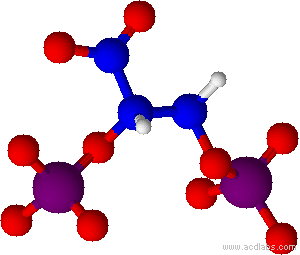Reinhold And Ruth Benesch on:
[Wikipedia]
[Google]
[Amazon]
 Reinhold Benesch (August 13, 1919 – December 30, 1986) and Ruth Erica Benesch (February 25, 1925-March 25, 2000) were American biochemists at Columbia University whose forty year scientific collaboration primarily investigated hemoglobin. Their most important discovery was the function of
Reinhold Benesch (August 13, 1919 – December 30, 1986) and Ruth Erica Benesch (February 25, 1925-March 25, 2000) were American biochemists at Columbia University whose forty year scientific collaboration primarily investigated hemoglobin. Their most important discovery was the function of
 Reinhold Benesch (August 13, 1919 – December 30, 1986) and Ruth Erica Benesch (February 25, 1925-March 25, 2000) were American biochemists at Columbia University whose forty year scientific collaboration primarily investigated hemoglobin. Their most important discovery was the function of
Reinhold Benesch (August 13, 1919 – December 30, 1986) and Ruth Erica Benesch (February 25, 1925-March 25, 2000) were American biochemists at Columbia University whose forty year scientific collaboration primarily investigated hemoglobin. Their most important discovery was the function of 2,3-bisphosphoglyceric acid
2,3-Bisphosphoglyceric acid ( conjugate base 2,3-bisphosphoglycerate) (2,3-BPG), also known as 2,3-diphosphoglyceric acid (conjugate base 2,3-diphosphoglycerate) (2,3-DPG), is a three-carbon isomer of the glycolytic intermediate 1,3-bisphosphoglyc ...
.
Reinhold Benesch was born in Poland but immigrated to England. He graduated from Leeds University in 1941. Ruth Benesch was born in Paris, France to Helene Leroi, a German economist who returned with her to Berlin six days later. She and her sister were evacuated to England via Kindertransport in 1939, where she graduated from Stroud High School
Stroud High School (SHS) is a grammar school with academy status for girls aged 11 to 18 located in Stroud, Gloucestershire, England
History
Stroud High School was founded in 1904 as the Girls' Endowed School by a group of local citizens led by ...
and received a B.Sc. from Birkbeck College
Birkbeck, University of London (formally Birkbeck College, University of London), is a public university, public research university, located in Bloomsbury, London, England, and a constituent college, member institution of the federal Universit ...
in 1946. To support herself in college she worked at a rubber factory where she met Reinhold, who was working there as a consultant. They married in 1946.
Both Benesches earned their doctorates in biochemistry from Northwestern University, he in 1950, she in 1952. They began working at Columbia in 1960.
Their early work concerned sulfur
Sulfur (or sulphur in British English) is a chemical element with the symbol S and atomic number 16. It is abundant, multivalent and nonmetallic. Under normal conditions, sulfur atoms form cyclic octatomic molecules with a chemical formula ...
in proteins and thiol groups. However, the bulk of their collaboration centered on hemoglobin. Of 125 scientific papers they published together, only 13 do not concern hemoglobin.
Their key discovery, in 1967, was that 2,3-bisphosphoglyceric acid was necessary for hemoglobin to transport oxygen throughout the human body through its role in loosening the bonds between hemoglobin and oxygen. This transformed how scientists viewed the oxygen transport system. Nobel
Nobel often refers to:
*Nobel Prize, awarded annually since 1901, from the bequest of Swedish inventor Alfred Nobel
Nobel may also refer to:
Companies
*AkzoNobel, the result of the merger between Akzo and Nobel Industries in 1994
*Branobel, or ...
laureate Max Perutz notes "that discovery opened a new era in the physiology of the respiratory carriage". The concentration of 2,3-bisphosphoglyceric acid in blood, 40 mg per 100 ml, had been known for many years, but it was not until the Benesches converted this concentration into modern units as 3.6–5.0 mM that its similarity to that of hemoglobin was noticed.
The Benesches also demonstrated that two types of protein chains, hetero-oligomer and homo-oligomer
In chemistry and biochemistry, an oligomer () is a molecule that consists of a few repeating units which could be derived, actually or conceptually, from smaller molecules, monomers.Quote: ''Oligomer molecule: A molecule of intermediate relativ ...
, were essential to the proper functioning of hemoglobin. Their paper in '' Science'' summarizing their discoveries was humorously titled "Homos and Heteros Among the Hemos" and signed "R2B2" to signify their "heterodimer
In biochemistry, a protein dimer is a macromolecular complex formed by two protein monomers, or single proteins, which are usually non-covalently bound. Many macromolecules, such as proteins or nucleic acids, form dimers. The word ''dimer'' has ...
." They also discovered mutant hemoglobin which only produced one type of chain, which were important in their later studies of sickle-cell anemia, caused by misshapen red blood cells
Red blood cells (RBCs), also referred to as red cells, red blood corpuscles (in humans or other animals not having nucleus in red blood cells), haematids, erythroid cells or erythrocytes (from Greek language, Greek ''erythros'' for "red" and ''k ...
.
After Reinhold's death in 1986, Ruth continued their work, until retiring in 1996. She died in 2000.
References
{{DEFAULTSORT:Benesch, Reinhold and Ruth American biochemists Columbia University faculty Northwestern University alumni Alumni of the University of Leeds Alumni of Birkbeck, University of London Kindertransport refugees Polish emigrants to the United Kingdom Polish emigrants to the United States German emigrants to the United States American people of German-Jewish descent